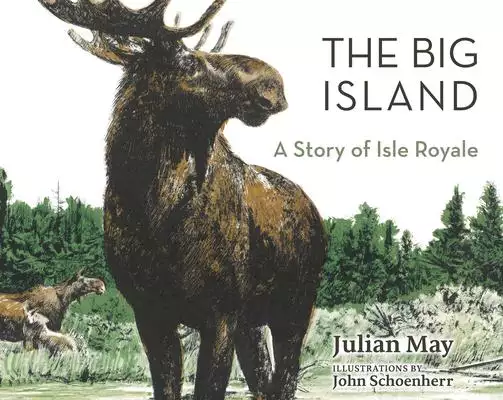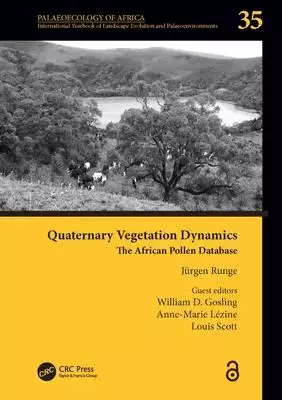Lake ecosystem的問題,透過圖書和論文來找解法和答案更準確安心。 我們找到下列地圖、推薦、景點和餐廳等資訊懶人包
Lake ecosystem的問題,我們搜遍了碩博士論文和台灣出版的書籍,推薦May, Julian寫的 The Big Island: A Story of Isle Royale 和的 Quaternary Vegetation Dynamics: The African Pollen Data Base都 可以從中找到所需的評價。
這兩本書分別來自 和所出版 。
國立臺灣海洋大學 海洋生物研究所 邵奕達所指導 黃辰宏的 海洋酸化對點帶石斑仔稚魚鈣離子運輸以及骨骼鈣化作用的影響 (2021),提出Lake ecosystem關鍵因素是什麼,來自於海洋酸化、點帶石斑、離子調節、鈣離子、骨骼鈣化。
而第二篇論文國立政治大學 外交學系 黃奎博所指導 施越兒的 湄公河流域的「水外交」: 資源、價值與管理 (2021),提出因為有 湄公河、湄公河委員會、大湄公河次區域經濟合作、下游湄公河倡議、瀾滄江─湄公河合作、新自由制度主義的重點而找出了 Lake ecosystem的解答。
The Big Island: A Story of Isle Royale

為了解決Lake ecosystem 的問題,作者May, Julian 這樣論述:
First published in 1968, this engrossing and beautiful picture book about wildlife on Isle Royale is available again Isle Royale, "the big island" of this book, is a wilderness national park in Lake Superior and home to a unique and fascinating ecosystem of animals, most notably the iconic wolf a
nd majestic moose. Here is author Julian May’s story about the island’s beginning, the kinds of animals that came to populate it, and their effects on the pristine landscape. Among them were the moose, who swam to the island from the distant shore to fend off starvation. The moose found conditions o
n Isle Royale so favorable that they reproduced quickly--but then faced another food shortage. The wolves arrived by floating to the island on an ice floe in winter and soon became important to the island’s ecology as successful predators of the moose. Complementing this fascinating text, John Schoe
nherr’s magnificent illustrations convey the strength of these animals and the beauty of the island that is their home.First published in 1968, and reprinted here with a new note by renowned wolf expert L. David Mech, The Big Island is an enchanting introduction to the wilderness and wildlife of Isl
e Royale.
海洋酸化對點帶石斑仔稚魚鈣離子運輸以及骨骼鈣化作用的影響
為了解決Lake ecosystem 的問題,作者黃辰宏 這樣論述:
根據政府間氣候變化專門委員會(IPCC)的預測,在本世紀末,二氧化碳濃度將提升至500~900 µatm,海水的酸鹼值則下降至7.9~7.7。海洋酸化會造成海水中碳酸鈣(CaCO3)飽和濃度升高,不利碳酸鈣在海水當中產生固態沉澱,並影響貝類以及珊瑚外骨骼的形成。此外,水體酸化可能會影響硬骨魚類的離子調節與發育生長,但並不清楚水體酸化是如何影響海洋硬骨魚類鈣離子的調節恆定性。本實驗比較飼養於正常的海水(pH 8.1)及不同酸化程度的海水(pH 7.8 與 pH 7.4)中40日齡點帶石斑仔稚魚,鈣離子運輸蛋白以及骨骼鈣質代謝相關基因在發育過程中的表現量變化。整體而言,實驗發現在酸化的環境之下仔
稚魚的成長與骨骼鈣離子累積並不會受到影響。然而,根據仔稚魚的離子調節、骨骼形成與鈣離子累積等數據的主成分分析卻顯示,水體酸化會影響整體的離子調節能力發展,以及可能輕微地影響對骨骼鈣離子沉積與再吸收。但是,若是以單一因子或以線性回歸進行分析與比較,則難以界定酸化對任何一組離子調控相關基因,例如細胞基底膜的鈣離子幫浦(pmca)、上皮鈣離子通道(ecac)以及運輸能量來源的鈉鉀離子幫浦基因的直接影響。此外,與骨骼鈣質沉積相關的成骨細胞(bglap)及破骨細胞(ctsk and trap)在海水酸化得情況下也並無獨立的顯著差異。實驗雖然表明在高二氧化碳的水體中,pH下降可能造成仔稚魚離子調節、骨骼形
成與鈣離子累積等因子的相互作用,而導致整體的生理差異。本研究亦顯示,點帶石斑魚仔稚魚的生長對高度酸化條件並不敏感,但此研究不能排除未來海洋酸化對沿海海水中的水產養殖業和野生種群影響的可能性。以目前而言,在海洋酸化的情況之下,硬骨魚的離子調節與鈣離子平衡的調節機制尚不明朗,須待更多研究證明。
Quaternary Vegetation Dynamics: The African Pollen Data Base

為了解決Lake ecosystem 的問題,作者 這樣論述:
Jürgen Runge is a Professor of Physical Geography and Geoecology at the Goethe-University Frankfurt, Germany. He is the director of the Centre for Interdisciplinary African Studies (ZIAF). As an environmentalist and consultant, he has worked for many years in West and Central Africa on the evolution
of tropical landscapes, former and recent climate changes. He is the editor of the series "Palaeoecology of Africa" and a member in several scientific editorial boards. The outcome of his studies has been used for regional planning (land use, infrastructure, management of natural resources). From 2
007-2010 he was working for the German International Cooperation (GIZ) leading a subregional project on geological resources, transparency and good governance in Africa. Currently, he is involved in capacity development measures such as international summer schools and training workshops. William D.
Gosling is an Associate Professor in Palaeoecology at the University of Amsterdam and Head of the Department of Ecosystem & Landscape Dynamics. Throughout his research and education William seeks to place current concerns related to on-going, and projected, climate change into a long-term context b
y examining multiple aspects of the sedimentary record of past environmental change. He is an expert in tropical pollen and environmental change during the Quaternary (last 2.6 million years). He seeks to gain insights into past ecosystem function through combining regional vegetation histories gene
rated from pollen records obtained from sedimentary archives with other lines of evidence, including: ancient charcoal (fire history), phytoliths (local vegetation change), and organic geochemistry (plant response to environmental change). William has been working on African projects since 2007 when
he was invited to join the team investigating the sedimentary core recovered from Lake Bosumtwi (Ghana). Unravelling the complex pollen record from Bosumwti lead William to spend time working with one of the pioneers of palaeoecology in Africa, the late Prof. Daniel Livingstone, and to establishing
a modern pollen trapping program across the forest-savannah vegetation gradient in West Africa. Anne-Marie Lézine is senior scientist at the French National Centre for Scientific Research in Paris. As a specialist in past vegetation dynamics and climate reconstructions from pollen and hydrological
data she has a about 40-years of experience in tropical Africa and surrounding regions. Trained in Marseille (France) where she got her PhD in 1987, she initially studied the Holocene environments of Ethiopia. Then she focused her research on arid (deserts from the Sahara (Mauritania, Algeria, Chad)
and the Rub al Khali (Yemen, Oman)) and semi-arid regions (Senegal). Since 2007, she has been moving towards the Equator. Her studies include the 90,000 years long pollen record of Lake Bambili, and other lake deposits from the Cameroon highlands. Her studies have been used for biome, land cover an
d climate reconstructions. Apart from her scientific skill, Anne-Marie is the coordinator of the African Pollen Database since its early beginning in 1994. Louis Scott is a researcher and mentor at the Department of Plant Sciences at the University of the Free State, Bloemfontein, South Africa. Foll
owing initial research on Cretaceous pollen and spores, he graduated in 1979 under E. M. van Zinderen Bakker and J. A. Coetzee, previous editors of PoA, with a PhD in Botany at the University of the Free State with a dissertation on late Quaternary fossil pollen from thermal spring and swamp deposit
s from the Limpopo and Gauteng provinces, South Africa. Following an early sabbatical in Tucson, at the University of Arizona, and a research visit to Marion Island, Southern Ocean, he continued to study Quaternary and older palaeoenvironments in South Africa, Namibia and Botswana. His studies inclu
de long pollen records from the Tswaing Crater lake, hominid and other cave deposits, hyena coprolites and fossil hyrax dung middens.
湄公河流域的「水外交」: 資源、價值與管理
為了解決Lake ecosystem 的問題,作者施越兒 這樣論述:
水資源對於國家的生存和發展至關重要,以東南亞來看,湄公河是一條極為重要河流,也因為其存在跨國界特性,導致這條流域面臨衝突並產生戰爭的機率更大。然而,從歷史到現在,這條流域卻未產生這種現象。本研究認為這歸功於該流域存在相關合作機構,包含三個主要機構湄公河委員會(Mekong River Commission, MRC)、大湄公河次區域經濟合作(Greater MekongSub-region Cooperation, GMS)、《下游湄公河倡議》(Lower Mekong Initiative,LMI)和瀾滄江-湄公河合(Lancang-Mekong Cooperation, LMC),以及大
國如:美國、日本與中國的資金及技術援助。其中,大國的援助不只為了區域穩定,同時也意涵著其戰略意涵。本研究主要採取新自由制度主義理論制度之觀點作為研究途徑,討論慣例、建制以及國際機構互相作用的效果,以及這些因素對於合作的重要性。除了從學者的文獻理解流域相關研究,同時針對官方資料進行搜集以分析各機構運作的重點和方法。本研究有三個發現。首先,湄公河流域三個主要機構都對區域合作做出了貢獻。雖然著重項目不同,如:MRC著重環境問題、GMS和LMC則較強調經濟發展,但各機構也因為存在這些差異而產生互補性,但這種互補式的合作關係是湄公河區域合作的特點也是誘因。再來,第三方的參與,對於湄公河發展與合作亦存在重
要性。除了資金,大國也為湄公河流域的環境與基礎建設做出努力。在這之中也體現出大國的政治戰略,尤其美中兩國在流域合作機構中的互動,其政治戰略展露無遺。最後,從上述兩項發現找出了湄公河流域的合作限制。強調主權的沿岸國家,導致該流域制度建立面臨挑戰,以及合作項目的局限性。此外,沿岸國存在的經濟發展差距也導致公共產品分配不均的問題,進一步阻礙了區域合作與整合。最後,大國的政治競爭成為一個雙面刃,良性競爭可以促成區域發展,而惡性競爭則會導致區域進一步的不穩定。